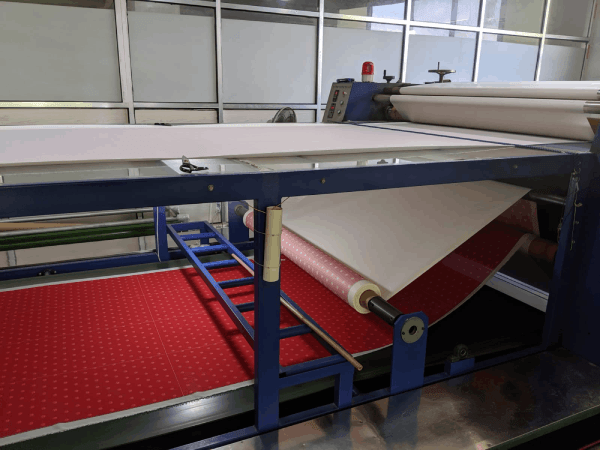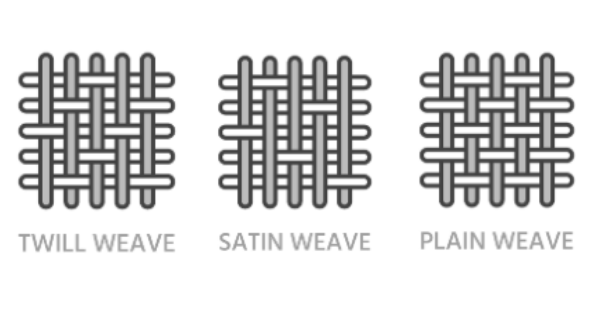What Fabrics Are Tightly Woven?
Here at Candor Threads, we are experts in custom apparel design and production because it’s what we love. But what we love even more is sharing our expertise with our customers – and really anyone who’s just curious. Don’t ask us about the benefits of digital printing at a cocktail party unless you’re ready for some real talk! (Spoiler: It’s easier on the environment.)
So if you have some burning questions and we’re not lucky enough to corner you at said cocktail party, read on for some answers to a few FAQs.
What are the main types of fabrics?
Before we dive into what fabrics are tightly woven, let’s start at the beginning. Fabrics are mainly categorized by three features: their material, method of production, and their design. The material of fabric can come from plant or animal fibers or from synthetic fibers. Fabric production involves either knitting, weaving, or the unique process that makes non-woven fabric. And the design of fabric can feature a characteristic woven or printed pattern or result from yarn or piece dyeing.
Fabrics are commonly named after whichever of these three features makes it distinct. Wool, for example, is named after its material, while jacquard is known for the distinctive patterns woven into the fabric. For our custom apparel, we use cotton, cotton blends, silk, polyester, modal, wool, rayon – whichever fabric material and weave are best for the customer and apparel at hand!
What fabrics are tightly woven?
Most fabrics that feature a twill or satin weave structure will be tightly woven. Denim, for example, is a cotton twill weave fabric, while charmeuse is a silk satin weave fabric – both of which are tightly woven. The third primary weave structure, the plain weave, can also be used to create tightly woven fabrics, though there is greater variability with this weave structure. Percale, for instance, is a tightly woven cotton plain weave, while chiffon also uses a plain weave structure, but is characteristically sheer and loosely woven.
If you are looking for tightly woven fabric for a face mask, we use double-layered cotton: a percale outer layer with 205 thread count and a 100 thread count inner layer. This combination balances a tight weave with breathability. After all, there’s a reason nobody wants to use denim for face masks!
What is a fabric blend?
Fabric blends use two or more materials to gain the benefits of their combined characteristics. Cotton/polyester blends, for example, get the soft texture of cotton and the durability of polyester. In a fabric blend, the various materials can be combined to create a blended yarn, or the fibers of each material can be woven together.
What is silk fabric made of?
When folks say “silk” to indicate a single fabric, they are often referring to silk charmeuse, which is made from fibers produced by domesticated silkworms (the most common source of natural silk for fabrics). However, there are dozens of silk fabrics with a variety of characteristics that mainly differ in their weave and source of silk. Silk fibers can come from several extraordinary creatures, including the mulberry silkworm, caterpillars, webspinners, raspy crickets, and even the pen shell mollusk.
What are common materials of scarves?
The fabric material of scarves will vary depending on the type of scarf and, of course, the season! For a breezy summer accessory, look for modal, rayon, or synthetic materials like polyester. For a winter warmer, go for silk or wool.
Is satin a type of fabric?
The term “satin” actually refers to one of the three fundamental weave structures, not a specific fabric. Different fabric materials can be woven using the satin weave, like silk or polyester, to create silk-satin or poly-satin fabric. With any material, the satin weave creates a glossy fabric surface with a duller reverse side.
What fabrics are used to make ties?
For many, the gold standard fabric for ties is silk. However, you are also likely to find polyester, linen, wool, cotton, and even cashmere ties around many a trendsetter’s neck.
What’s the difference between digital printing and screen printing?
Screen printing, also known as silk screening, is a multi-step, sometimes manual process. It deconstructs a design by color, then inks each color on the garment in layers using stencils, or screens. For example, a screen print of the Olympic rings might use five screens, inking each color one at a time.
Digital printing is a newer process that transposes an entire digital design directly onto the garment, not unlike your office’s inkjet printer. Digital printing benefits from easy color matching and less waste in production (and less cost).

Example of the digital printing process

Example of the screen printing process
What’s the difference between a woven design and a printed design?
A woven design incorporates a pattern or image into the weaving process, using different types and colors of threads and rigging the warp and weft of the loom to achieve the desired design. A printed design is applied to the surface of the fabric, using either screen or digital printing processes, which additionally allows for easier Pantone color matching.
What are performance shirts made of?
Performance shirts are constructed of a fabric blend that typically consists of both synthetic (spandex, polyester) and natural materials (cotton, rayon). The fabric blend of performance shirts is characterized by its breathability, durability, flexibility, and moisture-wicking capabilities.
Fun fact: Tweed was the performance fabric of yore, being the most popular fabric to wear for sporting gentlemen.
What’s the most expensive fabric?
Vicuna wool is widely considered the most expensive fabric, going for up to $3000 per yard. This is largely due to its incredibly fine fibers, the careful and infrequent process of gathering the wool from the vicuna, and the very low yield. One vicuna may produce only about a pound of wool, and can’t be shorn again for two years.
But there are those who would argue that sea silk is even more expensive because it is priceless. Only 60 or so garments made with this material that glints like gold in the sunlight exist in the world. Before you could only see it in a museum, sea silk’s lustrous filaments were harvested from the now-critically endangered pen shell mollusk.
How do I get started with my custom apparel order?
That one’s easy – give us a call!
Candor Threads is a custom apparel company that has been connecting groups through wearable comradery for over 38 years. If you would like to learn more about our custom apparel options, contact us today!


